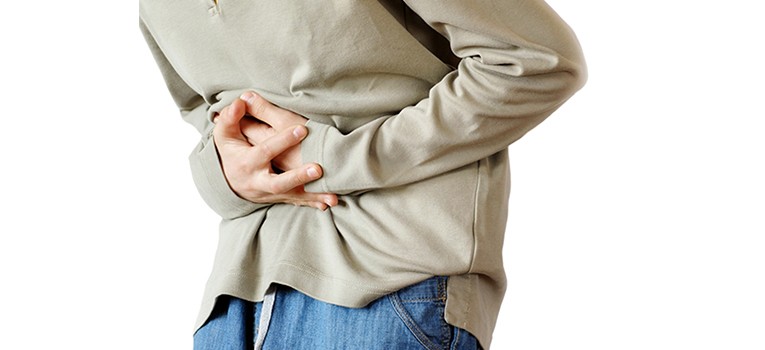Although an acute pain in the belly can indicate many different problems, the pain caused by gallstones has a nature of its own. The pain in the gallbladder can be of two broad types: acute or chronic.
Types of Gallbladder Pain
If you persistently experience sharp, stabbing pain in the upper right side of the abdomen—sometimes accompanied with nausea or a bodily chill, you can almost be sure your gall bladder is in trouble! A frequent dull pain in the upper right side of the abdomen accompanied by nausea, gas, or burps can also imply a chronic gall bladder problem like an inflammation, an infection, or a gallstone.
The acuteness of the gallbladder pain may vary from person to person, but generally a gallstone related pain will surface after every meal in the region described above. The pain often extends to the neighboring regions of the human body, like the bottom part of the right shoulder blade, between the shoulder blades, or the shoulders. Sometimes, the gallbladder pain can be felt right above the belly and under the ribs. If you have been experiencing mild to moderate pain of this sort for some time now and wish to give your diet a chance, then review this Neoalta article about preventing gallbladder problems through diet: Gallstone Prevention through Diet.
However, you must read on to find out how you can detect pain caused by gallstones, so that you can visit the doctor on time.
Pain Caused by Gallstones
A gallstone sitting at neck of the gallbladder or in the cystic duct will generally cause an inflammation of the gallbladder region. The inflamed gallbladder will cause pain in the right side of the abdomen, which will increase every time you bend or accidentally press that area. This condition can even be accompanied by cold or high fever. At times, the gallstones make their presence felt through continuous, sharp spasms in the right hand side of the abdomen.
According to WebMD, the gallstone pain may:
Will generally start after meals and become more severe at night.
Suddenly begin in the center of the belly and then spread to the upper right back or shoulder blade area. Physical movements will not alleviate this pain in any way.
Hinder the breathing process causing sharp pain in the belly while breathing.
The pain may be spasmodic spanning between 15 minutes and a whole day, or it may be continuous pain lasting for several hours at a stretch.
The above type of pain that continues and brings with it some fever, vomiting, and loss of appetite is a good indication that your gallbladder is inflamed or infected. If the stone occupies the bile duct, then bile can start backing up into the liver causing jaundice or yellowing of the skin. This is considered a serious condition requiring immediate medical attention. Stones in the bile duct are also accompanied by dark urine, chalky stools, and a drop in the blood pressure. You can get useful information about laparoscopic gallbladder surgery: Laparoscopic surgery for gallstones




